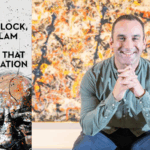It is increasingly apparent that we are living amidst tense times. The recent result of the US election was, depending who you ask, either a step towards peace or a reaffirmation of the hate and division that engenders violence. As of November, more than 43,000 Palestinians have been killed in Gaza, including over 11,000 children. It is difficult to imagine a world in which true peace is attainable, and hope seems to be increasingly fleeting. The spectre of war haunts us.
It is in this state of hopeful anticipation that we turn to art, as we all have for centuries. The subject of war has been of particular interest to filmmakers for as long as the medium has existed. The first film to ever receive an Academy Award for Best Picture, Wings (1927), portrays World War I fighter pilots. Two years later, Lewis Milestone’s seminal adaptation of All Quiet on the Western Front (1930) also won Best Picture. Since then, classic films like Westfront 1918 (1930), Bridge on the River Kwai (1957), The Great Escape (1963), Apocalypse Now (1979), Platoon (1986) and Schindler’s List (1993), among many others, have all memorably used the visual language of war to tell stories, both fictionalised and “true”.
For as long as filmmakers have been exploring war, however, the ethics of these films have been debated. What are the responsibilities of a filmmaker depicting war? What is the difference between depiction and glorification? And are we allowed to be entertained by war on screen? This raises the question that, for me, is one of the most important aesthetic questions we can be asking of modern cinema, given the precarious nature of global politics in the twenty-first century.
Is it possible to make a truly anti-war film?
A fascinating case study that speaks into this dilemma is this year’s controversial film from writer/director Alex Garland, Civil War. The film follows a group of
photojournalists who travel across a ravaged and war-torn future USA to reach the president and get the interview. The president has seized power by abolishing the FBI and claiming a third term, and despite his declaration that victory is imminent, secessionist movements are closing in on the president’s last stand in DC. As they traverse the country the journalists witness atrocities and violence that defy any rational explanation, and are confronted with the implications of objective journalism when a country is tearing itself apart.
I think that Civil War is a rare example of a film that is truly anti-war in its ethics and aesthetic. While Schindler’s List and Saving Private Ryan (1998) director Steven Spielberg once stated that “every war movie, good or bad, is an anti-war movie,” this statement ignores the ways that art allows artists to infuse images with their own artistic intent. For example: Spielberg himself famously turned a harrowing sequence in Schindler’s List of Jewish prisoners being rounded up into group showers into an exercise in suspense, playing on expectations and using Hitchcockian technique to admittedly astonishing effect. But does this maintain the film’s moral objection to war? Or is it actually exploiting and leveraging our own history of war to a morally grey end; entertainment?
This is the issue that I and many others take up with a large swathe of our culturally significant entries into the war film canon. These films would have us believe that through the violence and terror of war there is still catharsis and meaning to be found; some kind of justification or absolution. Often in our films violence and bloodshed is the necessary price we must pay to arrive at meaning or narrative satisfaction.
Civil War, much to a wider audience’s dissatisfaction, denies this of its audience. By the time the journalists have reached the end of their journey, there is no catharsis to be found. No absolution, no revelation or justification to be found in the senseless violence that has begun to tore the fictional(?) country apart. Instead, there is simply a man pleading for his life to be spared at the end of the barrel of a gun. It is in this refusal to
engage in contemporary politics, this denial of any form of catharsis or revelation through violence, that Civil War is not simply a film about war, but is truly anti-war.
This is important. Films and culture shape the conversations we have, and the conversations we have shape the way we interact with the world. What catharsis is there to be had in over 43,000 dead Palestinians? What catharsis is there to be had in 1,000 days of war in the Ukraine? The disheartening and terrifying thing to admit is that there are many answers to be found to that question depending where you go looking.
Whether or not we decide to confront it, the reality is that war is used as a means to an end, whether that end be political, religious, racial or otherwise. This is why it is important when films are able to hold up a mirror to the despicable moral black hole at the heart of this sentiment. There is no meaning to be found in war; only suffering.
When war is used to entertain, there is great value in choosing instead to cherish the art of anti-war.
Other notable anti-war films: Paths of Glory (1957), Come and See (1985), Grave of the Fireflies (1988), Incendies (2010), Threads (1984), Dr. Strangelove or: How I Learned to Stop Worrying and Love the Bomb (1964).
Jonty Cornford writes about film at bluerosefilms.blogspot.com, and hosts the UCA podcast Filthy Hope.











